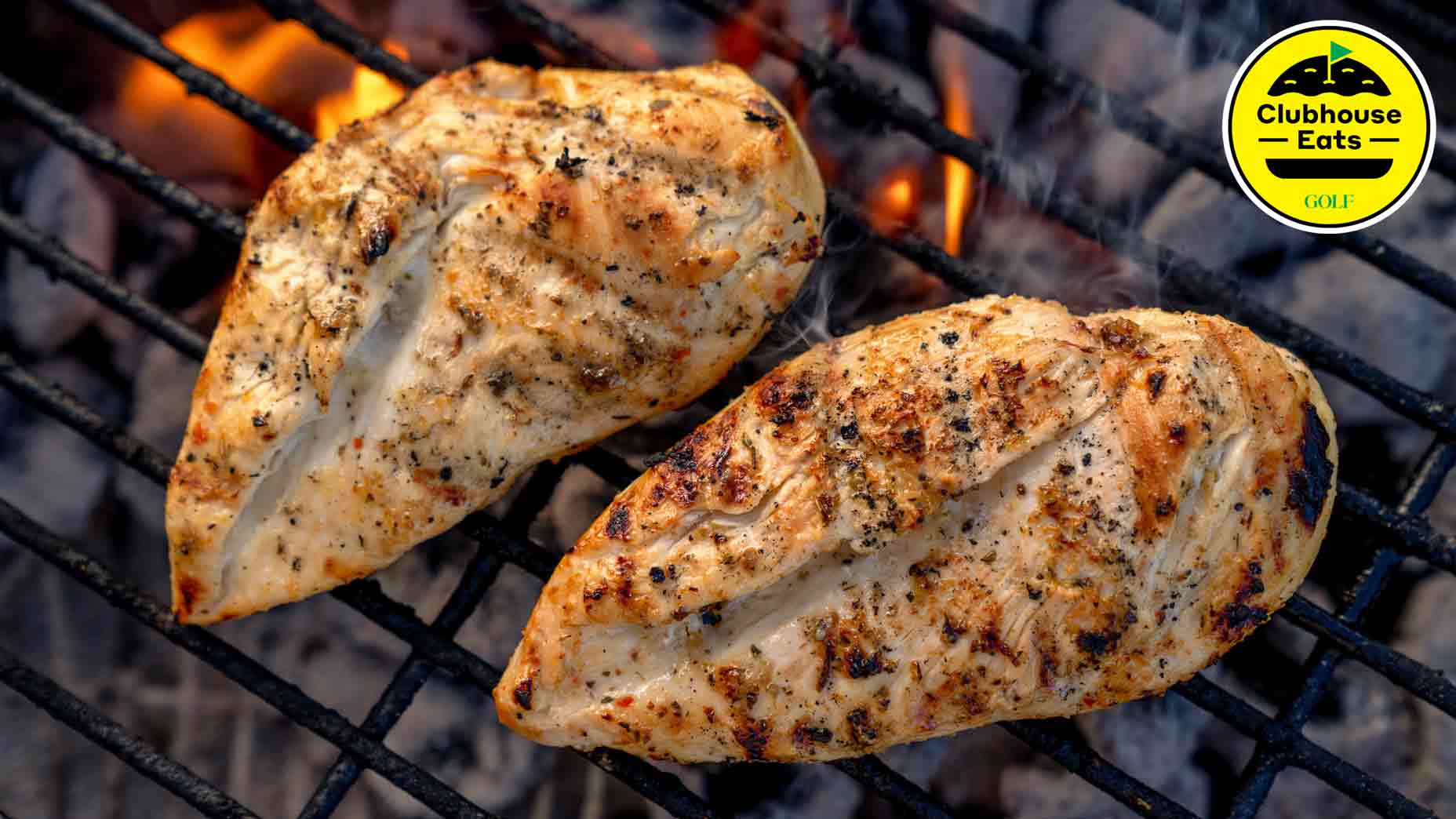Welcome to Clubhouse Eats, where we celebrate the game’s most delectable food and drink. Hope you brought your appetite.
***
Grilling season is upon us, which means you’ll soon be planning summer barbecues with customary cuts of chicken on the menu. Although teeming with potential, those breasts and thighs — and their potential flavor and tenderness — could go up in flames if you’re not careful. Fortunately, we sought the advice of Eric Stenberg, chef at The Wilderness Club in Eureka, Montana, who’s known for grilling some great poultry.
It starts with the marinade, which Chef Stenberg says is a critical component for integrating moisture into the meat prior to cooking and preventing the heat of the barbecue from drying out the chicken. (We’ve included the recipe for one of Chef’s Stenberg’s go-to wet brines below.) Let the meat marinate for at least four hours, though overnight is ideal.
If you want to create your own wet brine or marinade, in Stenberg’s opinion it’s all about creating a levelness in contrasting tastes and flavors. “You should be finding a balance between sweet and sharp,” he explains. “I prefer a little more acidity using skin-on chicken as it tends to help sustain the moisture levels.”
You’re likely conditioned to aggressively trimming fat away from the meat prior to cooking, but when it comes to that prep, remember that less is more — in this case, trimming less fat can lead to more flavor and tenderness. “Fat is a sealant for moisture,” Stenberg says. “You just want to cook chicken with fat on the less-hot part of the grill to prevent flare ups.”
You may also be trained to think chicken breasts are the best cut for the grill, but chef Stenberg prefers thighs. “The dark meat component is small enough to have one bone,” he explains, “and really holds its flavor and stays moist.”
Finally, when it comes to mastering your grill and the cuts of chicken that you’ll cook there, remember that patience is more than a virtue — it’s a necessity if you want to perfect those well-seasoned and marinated cuts of poultry. “Unless you see flames,” says Stenberg, “don’t rush to open the lid, don’t open the lid too often, and don’t flip the meat too soon. Patience is required for balanced cooking.”
One more thing …. Invest in a digital meat thermometer. As the chef acknowledges, “165 degrees is your friend zone.”
Chef Eric Stenberg’s Wet Brine
Ingredients:
1 cup unsweetened pineapple juice
1 cup chopped fresh pineapple
1 cup fire roasted tomatoes, pureed
1/3 cup apple cider vinegar
1/4 cup fresh garlic, chopped
2 Tbsp. Worcestershire sauce
1 Tbsp. honey
Pinch of dried red chili flakes
Salt and pepper to taste
Preparation:
Mix all ingredients, except for the salt and pepper, in a medium or large bowl.
Season the raw chicken liberally with salt and pepper, then transfer to a large freezer bag.
Pour in the wet brine mixture, making sure each piece of chicken is submerged or well-coated in the liquid.
Refrigerate for at least four hours but preferably overnight.
